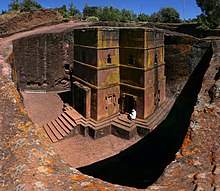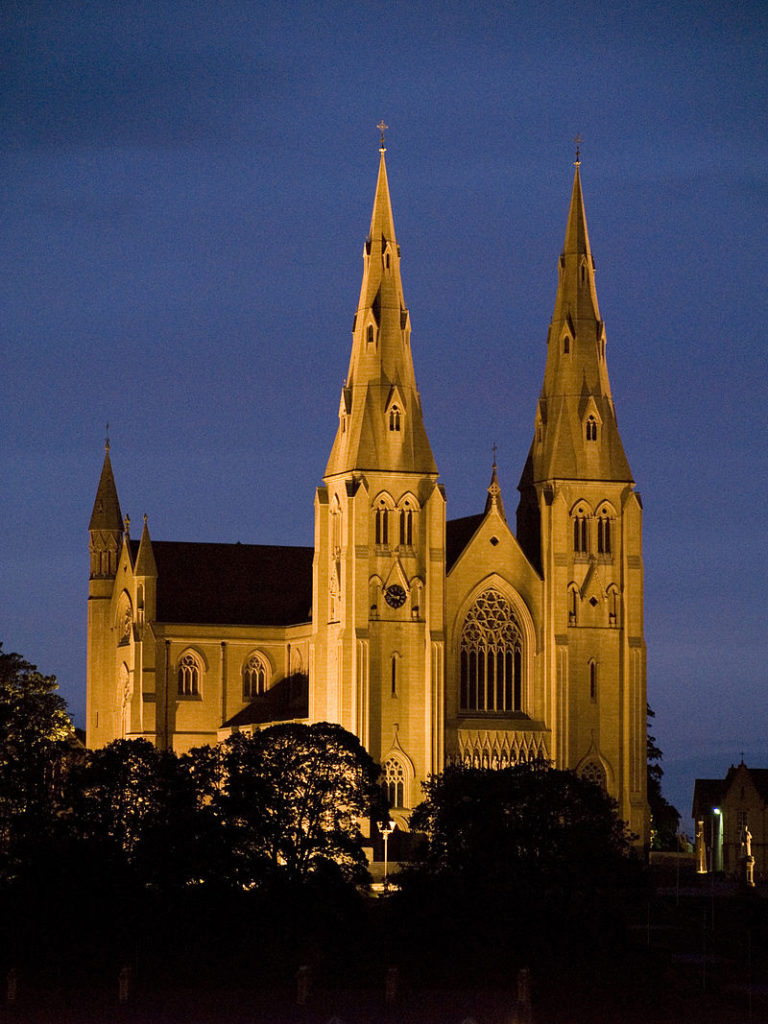Here you can stay up-to-date with my occasional blog posts, highlighting the things I find interesting or peculiar! this is an informal forum, and so the blog posts will subsequently be informal. If you are looking to read posts in an MLA or Chicago format, you have come to the wrong place!
June 25th | Symbols in Christianity
Getting started this week with the first blog post, I think I’ll talk a little about my thoughts on our reading of chapter 6 in Christianity: The First 3000 Years by Diarmaid MacCulloch. One of the things I found most interesting as began reading this book is the important use of symbols we see not only in Christianity, but also throughout the history of the world. The Chi-Rho was talked about a great deal in the book, and was a symbol of imperial Christianity. I think it is remarkable how quickly the Chi-Rho became an institutionalized symbol and how it was used to signify a new, imperialised, Christianity. Constantine seemed to have a fondness for the symbology of change, as he also moved the capital of the empire from Rome to Constantinople, labeling the empire “New Rome.” The theme here seems to be that the Christianity is a shifting force in perpetuity, although at different rates of acceleration. The use of symbols in Christianity seems to be most effective in achieving a re-branding of sorts; allowing a new form of Christianity to rise from the ashes, so to speak.

July 5th | Bet Giyorgis
I came across a photo of a remarkable church while reading MacCulloch’s Christianity. The structure is named Bet Giyorgis, or St. George’s Church, and is entirely built into a pit, having been chiseled from the top down. Upon doing some further research, I have learned that this church is located in Lalibela, Ethiopia; a town for which is famous for their rock-cut architecture. This church (although it is hard to see in the picture), is chiseled in the shape of a cross. While archeologists have trouble dating St. George’s Church, they estimate it having been built in the 13th century. I oftentimes have a hard time wrapping my head around the fact that people so long ago could create such magnificent feats of engineering with so little modern technology. Regardless, the St. George Church is certainly going on my list of “places I’d like to visit.”

July 17th | Catholicism in Ireland
This week I decided to look into the relationship that Catholicism has with Ireland. I have always been interested in Ireland, perhaps because I love the landscape of the region or perhaps because of my love for Guinness, I found reading about the country through the lens of religion to be interesting. What first drew my attention was a quote from Diarmaid MacCulloch’s Christianity: The First Three Thousand Years on page 671, stating “Protestant Elizabeth’s accession made it increasingly easy for both the Gaelic- and English-speaking Irish to identify Catholicism as a symbol of Irish difference from the English.” This not only tied in with the theme of my first blog post a few weeks ago regarding the use of symbology for religious and strategic reasons, but also the use of religion as a geopolitical strategy. Ireland of course through a significant part of its history has had a tense relationship with Britain, and it only makes sense that Ireland might embrace Catholicism to differentiate itself, and ally itself with the Catholic Church. If I didn’t have more classwork to do, looking at the history of Irish Catholicism would certainly be an area I’d like to research more thoroughly!

August 2nd | John Paul II and the Democratization of Poland
I have tried to jump a few centuries into the future this week, as I was curious as to how the Catholic and Protestant split affected Americna politics; what I found even more interesting however, was the election and aftermath of the election of Pope John Paul II. Pope John Paul II was elected following the death of Pope John Paul I, and was the first Pope of Polish descent. He made extraordinary leaps in fixing relations between the Catholic Church and other world religions. What is most interesting to me however, is the Pope’s influence on freedom in Poland. In 1979, the Pope travelled to Poland, and simply by doing so, sparked the Solidarity movement which granted freedom and democracy to Poland. The communists that controlled Poland at the time were flailing to shows that they were still able to govern. The Pope’s visit ended the spell of communism in his country, and set precedent for communism to fall in the rest of Europe. The fact that a kid who grew into adulthood as the Nazi’s were taking over his country, then communists directly afterward, could then become the Pope of the Catholic Church and restore freedom to his land. It is was of the beautiful stories of history, and history doesn’t always have many of those.

August 14th | Peace between Israel and The United Arab Emirates
For today’s post I wanted to indulge in some recent history: in fact, about as recent as history can be. Yesterday (August 13th, 2020), A peace agreement was struck between both Israel and the United Arab Emirates. I of course am no expert in Middle Eastern affairs, however it is safe to say that this seems to be both of great benefit to Middle Eastern relations as well as extremely significant in terms of the power balance and environment in the region. The peace agreement has been entitled the Abraham Accords, in honor of Abraham, the patriarch of the Christianity, Judaism, and Islam – the three major Abrahamic religions. This move, if part of a larger trend, could show great importance to the history of Christianity if more of these peace agreements are signed between nations.

August 21st | Christianity in China
For the blog post this week, I wanted to think about Christianity in an often overlooked part of the world: China. Perhaps it is not overlooked, but to me it feels like when we talk about Christianity, we talk about Europe, Rome, the Middle East, and North America in exclusivity. I also have been learning Chinese for the past two years at Oregon State, so the country and its’ culture intrigues me. I however was surprised to learn that Christianity has been a present in China since at least the 7th century! Christianity in modern China is an interesting relationship. From what I have read, there are only three Christian Churches that have been legally approved by the Chinese Communist Party, which governs China. This of course, from an American perspective, is absurd! But the CCP is not known for its glowing appraisal of religious freedom. In China, there are illegally ordained “house Churches” and “Underground Churches.” House Churches are Protestant-led, and Underground Churches are Catholic-led. In 2019, the CCP authorities raided hundreds of House Churches, closing most all of them down. Authorities throughout China have prohibited the cross on the church, and replaced pictures of Jesus Christ with General-Secretary Xi Jinping. This is of course not uncommon with communist regimes, but with the persecution of Christians, and the detainment of Uighur Muslims in Southwest China, the future of religion in country is hard to bet on.

September 1st | The End of an Era
Sadly, the time has come for the end of our class, History of Christianity. Ten weeks seems to just go by so quickly! In honor of our last blog post, I decided to flip to the last page of the Course Textbook Christianity: The First Three Thousand Years. MacCulloch brings up an interesting point at the end of his book regarding the future of Christianity. He wonders if secularism will be a foe or friend to Christianity in the future as Nazism and Communism both were; or whether or not it will simply remold Christianity into a new version of itself. I personally think that Christianity will go through a transformation, one that reconciles differences with secularists. What MacCulloch is completely right about is this: we simply do not know what happens next, as there is no bow-tie to place atop the box that is the story of Christianity. To borrow a phrase from economics, Christianity lives in a world of “creative destruction.” We don’t know what the next iteration of Christianity will look like, we can only be sure that it is coming. I think MacCulloch says it best in stating: “it would be very surprising if this religion, so youthful, so varied in its historical experience, had now revealed all its secrets.”
“It would be very surprising if this religion, so youthful, so varied in its historical experience, had now revealed all its secrets.”
Diarmaid MacCulloch

